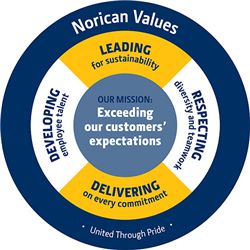Sustainable advantage: recyclability and waste reduction
A fundamental reason for the growth in aluminium usage is its advantage over other materials in terms of recyclability and waste reduction.
Near net shape production requires less machining and wastes less material – the properties (including malleability) of aluminium are particularly suited to leveraging this benefit for improved raw material efficiency.

